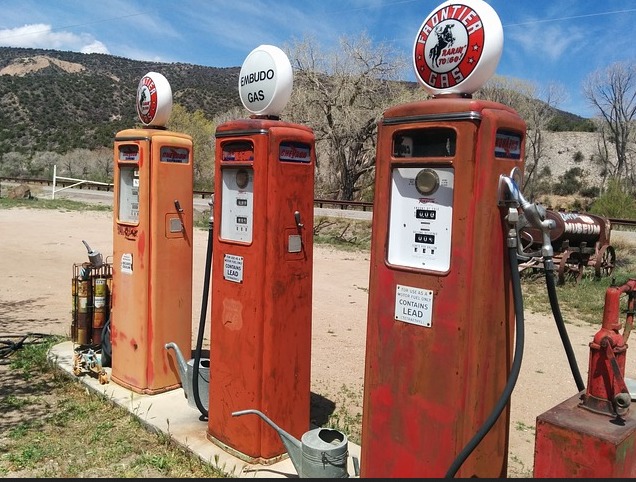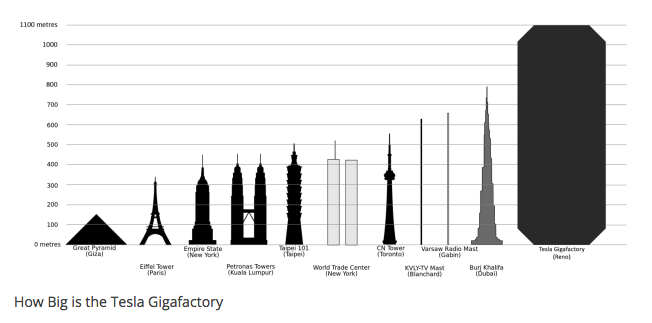The debate is on over whether the current run of lower energy prices (gas pump prices are at a four-year low) is a one-off or a long-term lift for the U.S. economy.
There’s a strong case for optimism and it goes beyond the boom in shale-generated oil and gas production in North America that’s drawn attention in recent years.

Auto innovation
The economics of renewable energy–wind, solar and hydroelectric power–are changing in a fundamental way, and that could lessen America’s reliance on fossil fuels going forward.
Consider what’s happening in the auto industry, whose gas combustion engines are often cited by environmentalists as the scourge of the planet.
Yet what if automakers in the U.S., Asia and Europe turn out to be part of the solution.
The big global automakers, Toyota (TM), General Motors (GM), Ford (F) and Volkswagen (VLKAY) are investing significantly in low-emission vehicles and next-gen battery technology, a trend that could drive down the costs of alternative energy production along the way.
Gigafactory
Tesla (TSLA), Panasonic (PCRFY) and other partners are investing in a mammoth, high-tech battery plant called Gigafactory. The project is expected cost up to $5 billion and to start operation in a Nevada desert by 2017.
That matters because the lower the cost of these lithium ion batteries, the lower the cost of electric vehicles for consumers.
And getting production costs on par with traditional gas combustion cars and trucks is crucial if a commercially viable mass market for electric vehicles is ever going to take off.
Tesla says that it hopes to drive down the cost of its battery pack by more than 30% per kilowatt hour (kWh) during its first year of operation.
The proposed Gigafactory will be a monster-sized factory. That’s not an exaggeration. Check out this cool graphic from cleantechnica.com to get a sense of its scale.

Wider impact
More importantly, this vast battery production operation is designed to produce more power via solar panels and other energy-saving measures than it consumes. In other words, the facility will be completely energy self-sufficient.
If Tesla and its partners succeed in pulling that engineering feat, Gigafactory’s design could inspire other global manufacturers to follow.
Wait there is more: Lowering the cost of lithium ion batteries could have the additional benefit of expanding the market for industrial and residential energy storage systems.
One of the big challenges holding back the spread of renewable energies such as solar power generation and automated “smart” power grids is affordable storage capacity.
Energy storage systems using lithium ion batteries can be linked to electricity grids or solar power generation stations and help businesses and consumers use power more efficiently by storing power generated at night and off-peak hours.
NEC (NIPNF), LG (LGEPF), Johnson Controls (JCI), EnerySys (ENS) and other companies are seeking a piece of this expanding market.
Hydrogen era
Then there are the fuel-cell cars powered by hydrogen that Toyota, Honda and other carmakers are launching starting in 2015
Toyota Motor Corp (TM), which revolutionized the industry with its hybrid-engine powered Prius back in the 1990s, is a true believer in fuel cell technology and is introducing a $70,000 fuel cell sedan in Japan before April 2015.
Meanwhile, Toyota and IBM are also developing intelligent traffic systems that would use algorithms to data thrown off from wired automobiles and alleviate traffic congestion in major urban centers, particular Asian mega-cities.
Imagine if all manner of vehicles were tracked wirelessly and traffic data were fed into a computer system that could redirect cars and avoid the kind of traffic jams that waste time and energy.
Sure, a lot of these technologies are many years out from realization. Gas-powered cars will be around for a very long time to come and automakers may shift directions if low-emission vehicles don’t produce enough of the green stuff.
Yet investors should follow the money.
If the production costs to build energy storage systems, electric vehicles and fuel cell cars goes low enough, we might be looking at a far more cleaner future with more affordable energy than is commonly realized.
DISCLAIMER: The investments discussed are held in client accounts as of October 31, 2014. These investments may or may not be currently held in client accounts. The reader should not assume that any investments identified were or will be profitable or that any investment recommendations or investment decisions we make in the future will be profitable. Past performance is no guarantee of future results.




